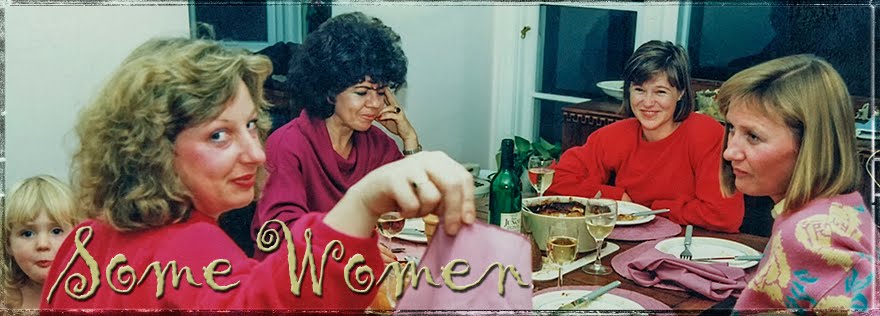I’ve been spending quality time recently with some of
the women in my life, past and present. Photographically-speaking, I mean.
As part of my project to digitize pre-digital photo
prints (and, eventually, slides and negatives), I turned for a break this past
week to prints from the Blackwell Family Archive, a trove of hundreds of
images, many taken by my father. Like me, he was a photo hobbyist.
Restoring old images once they’re digitized is for me a
contemplative activity. The first stages, correcting colour, contrast,
sharpness, cropping, etc., are exciting and go fairly quickly. Quite often, the
pictures end up looking better than the prints from which they were taken. Sometimes,
they’re a revelation.
In the final stages, everything slows down as I spend from
10 to 30 minutes, occasionally more, painstakingly eliminating scratches, pits
in the emulsion, discolouration due to mold or water damage and other physical
defects.
The tools I use for this in Photoshop are powerful,
almost magical. They allow me to patch affected areas with adjacent pixels of
the same hue and luminosity – something like a digital skin graft, but with
cloned skin. The results, if done carefully, are seamless.
It’s the process of poring over the image,
quadrant by quadrant, at high magnification, and the repetitive, slightly
monotonous task of patching, that I find almost meditative.
It was mostly unconscious decisions that led me to
work last week on pictures by my dad of sister Pat as a pre-teen, my mum when she was in her sixties, Karen as a teenager.
That led me to one more to complete the set – a digital original in this case –
of Caitlin, taken eight years ago in a Roman restaurant.
And that led, much more consciously, to a series of
pictures I took in 1988 at a dinner party at our place in London. I’ve always loved these
pictures. I call the series “The Witches of West Mile”: four intelligent,
capable women in their primes, indulging the only man present, but presently growing just a little impatient with him. And then, well, a little crazy.
 |
| (L to R) Caitlin Blackwell, Shelley Boyes, Lesley Classic, Karen Blackwell, Gail Wreford |
 |
| (L to R) Caitlin Blackwell, Shelley Boyes, Lesley Classic, Karen Blackwell, Gail Wreford |
 |
| (L to R) Caitlin Blackwell, Shelley Boyes, Lesley Classic, Karen Blackwell, Gail Wreford |
It’s perhaps no coincidence that I have been contemplating
the women in my life. I listened recently to Sally Armstrong’s CBC
Massey Lectures series entitled “Power Shift: The Longest Revolution.” It’s about
the long, up-and-down history of women’s attempts to redress the balance of
power between the sexes – possibly, maybe, hopefully, now finally coming to an end.
The lecture series is a passionate, eloquent document.
I would recommend it to anyone, but especially to men. (The first is available here
at the CBC Ideas website.) One of
its most passionate arguments is that for the revolution to finally succeed – not
just to the benefit of women, but to the benefit of all of us – men have to
join too.
That led me to wonder why so few of us in fact have joined?
And why even those, like me, who consider themselves feminists, have done so
little to materially move the revolution forward? And that led to another fairly obvious question, what should we be doing?
I don’t have answers. Or maybe it’s that the equally obvious answers are too uncomfortable.
At the same time, I’ve been reading the latest from
one of my favourite contemporary novelists, Tracy Chevalier, an
American-British writer of historical fiction. (The Girl With The Pearl Earring is her most famous.) A Single Thread (2019) is an oddly
compelling story, set in Winchester (England) in 1932. It’s about a middle-aged “spinster”
trying to carve an independent life for herself in a repressive world made by
men to keep women in their place. Although it's barely mentioned, the story is set less than five years after women in England won the vote.
Its themes of quiet, subversive defiance of rules and mores that diminished women are an interesting complement to Sally Armstrong’s
lectures. They illustrate her point that women have struggled through the ages –
always had to struggle – to prove they were more than men wanted them to believe they were. And that some always, against odds, succeeded.




